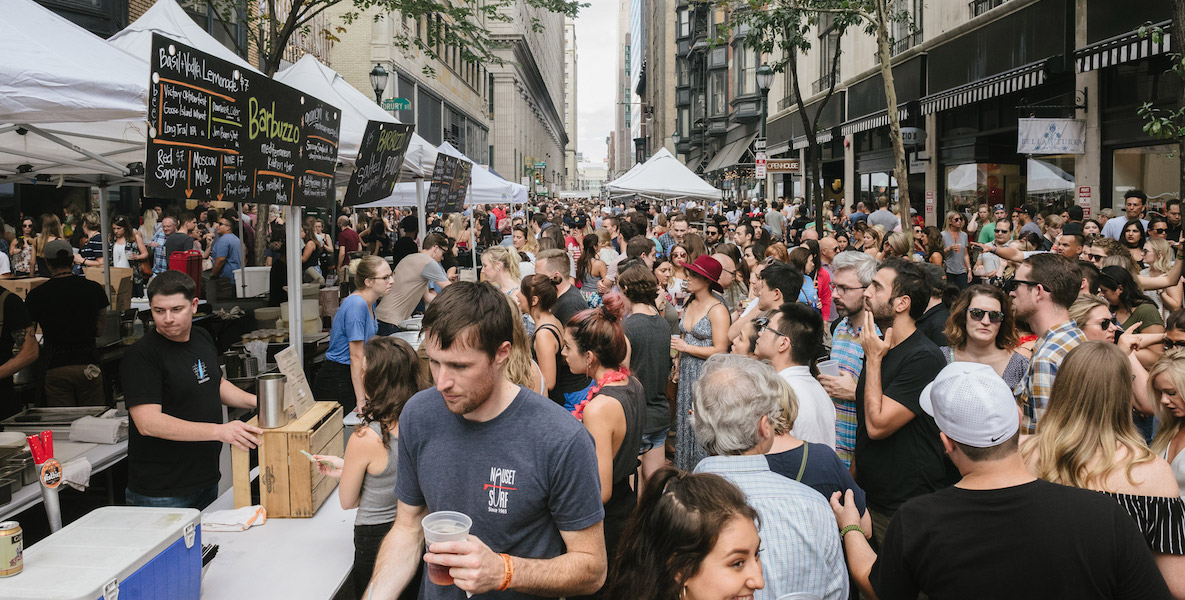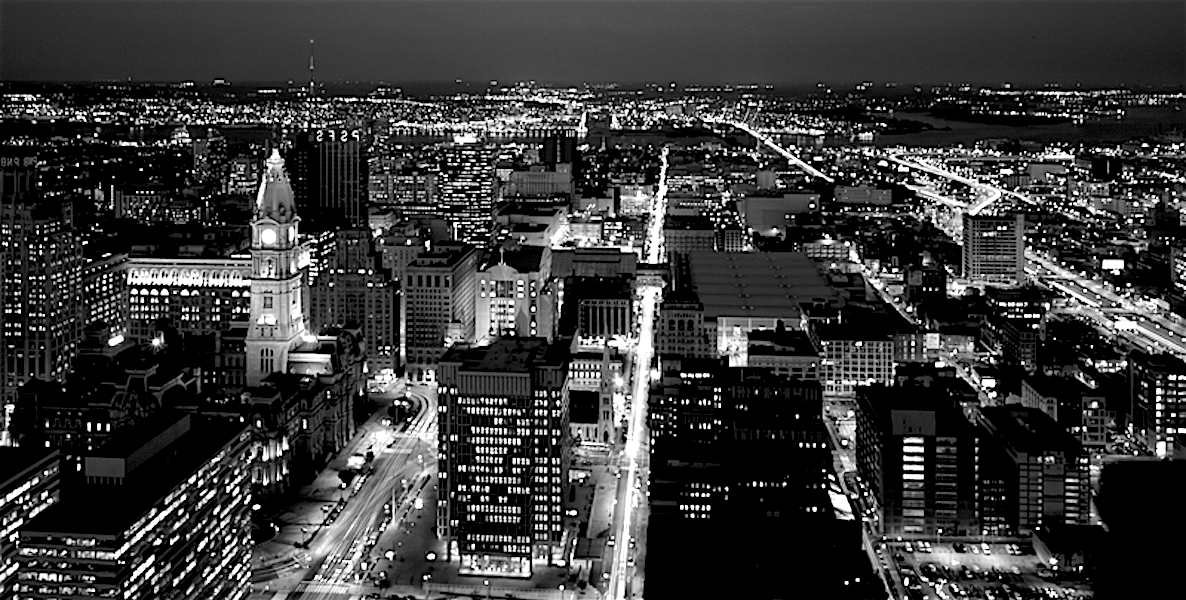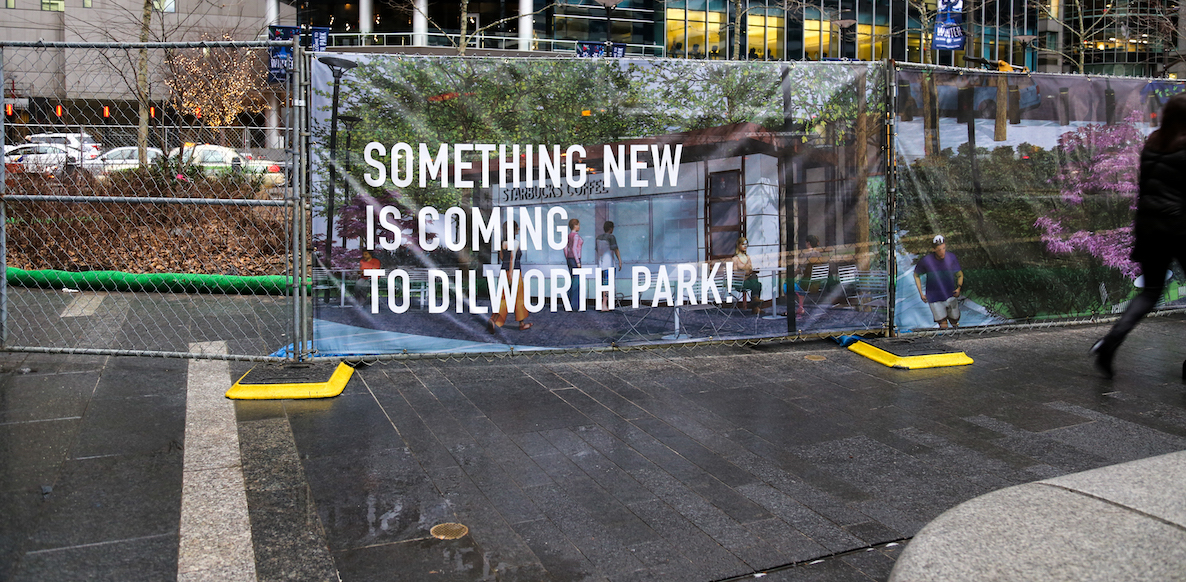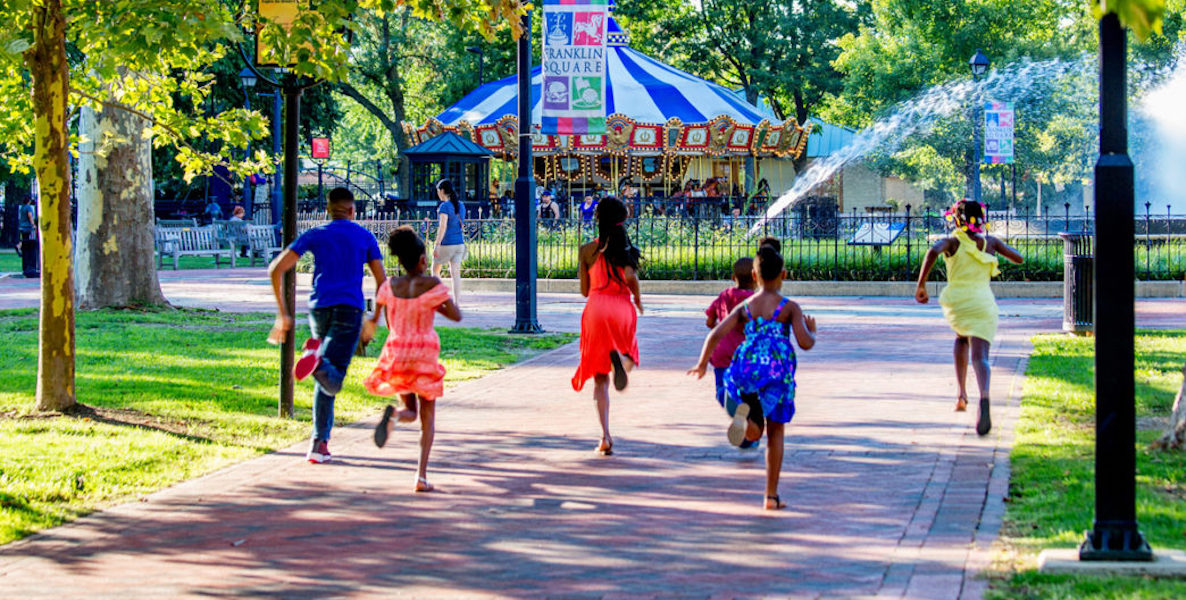Since 2005, the Center City District has renovated and now manages five downtown parks. In the same period, seven other parks opened within commercial areas in Center City, University City or along the riverfronts. Only one was fully funded and led by local government. Seven of 11 were planned and constructed by business improvement districts; three by nonprofit corporations; and one by a private developer. Local foundations contributed to most. Federal, state and local resources were secured for some. However, with full cooperation and support from three successive mayors, these projects originated and were implemented outside of local government. The emergence of so many new partners for parks and the type of places they have created, strongly suggest it’s time to think differently about civic spaces.
Lungs of the city
In the 19th and early 20th centuries, when local governments funded and built parks, it was in response to the clatter, crowding and pollution of a thriving manufacturing city. Urban areas were bursting with tanneries, breweries, slaughterhouses and factories belching fumes. Children in row house neighborhoods played primarily on sidewalks, streets and in alleys.
Parks were conceived as alternatives, as the lungs of the city. Like our wonderful Wissahickon Valley, which still evokes a 17th century wilderness, green preserves were places for adults to escape the city, to get away from the smoke and exhausting toil of work. Playgrounds were for rambunctious children to stay out of trouble through supervised play.
The 21st century city
Walk into any downtown workplace today and you will find few roaring machines. Not even cigarette smoke. There may be fountains in the lobby, a lounge with landscaping. There are computer workstations, conference rooms and perhaps ping-pong tables. For many, the only physical exertion happens in the company gym or at one around the corner. Workers gather around laptops and lattes, plug into tablets and smartphones, video conference with London or Bangalore. Boundaries are blurred, old lines crossed.
![]()
Cities still create traditional neighborhood playgrounds and recreation centers. But because the nature of work, the quality of urban air and how people use space have all changed, so too have downtown parks.
Today’s watchword is civic engagement—people from different backgrounds coming together. But, there are many other places where that occurs: cafes, coworking spaces and cultural institutions. Parks are asked to do more in response to their surroundings. Nearly every one of downtown’s new parks has been created by place-based organizations that integrate them into more comprehensive strategies for their area.
Dilworth Park is a space for parents with strollers, or day-camp counselors arriving by subway, to watch their children play in the fountain or on the lawn. It’s a place to read a book, download a tune, buy salad or coffee, check office email, get a head start on homework, hold a meeting, converse with friends face-to-face or on social media. It is sometimes a place for protest, or to watch the theater of other people, or to shop at a local crafts market. It is designed for more than one age or one activity; it’s designed for all.
To reclaim inactive spaces with inanimate edges, it takes more than trees, flowers and benches.
After 5 p.m., Dilworth often becomes a venue for dance, exercise or yoga classes, a drink before dinner, a movie, concert, or reception. Portions of the fountain are turned off to accommodate a stage or tented event with chairs and tables or big celebration when local teams win. The flat surface works well for winter ice-skating and holiday markets.
Part of the competitive offer
In large spaces, multiple activities occur simultaneously. This explains why new places, like Drexel Square at 30th Street Station, design for flexibility. After decades as a parking lot, no one knows yet who may come or what may happen there. Good park design prepares pragmatically for multiple options. It recognizes that places change over time, responding to evolving preferences of workers, residents and visitors. Successful parks thus need well-funded, active management to adapt continuously to new requirements and challenges. In the five years since opening, we’ve made scores of changes to Dilworth Park. Quality public spaces from the Third Street Promenade in Santa Monica, to Millennium Park in Chicago to Post Office Square in Boston have all become part of the competitive offer of their cities through similar, continuous recalibration.
Rittenhouse Square, one of William Penn’s original squares, is a helpful contrast to our new generation of parks. Jane Jacobs noted back in the 1950s that it succeeds not only through excellent design but because of surrounding, “mixed primary uses”—residents, students, parents, office workers, hotel guests, shoppers and restaurant patrons who animate the park at different hours. Blessed with dense, residential and commercial edges, Rittenhouse Square’s excellent design achieves success with just a dash of well-funded management and landscape maintenance, supported by generous neighbors.
Reclaiming failed spaces
By contrast, many of our recent downtown parks reclaimed failed or abandoned spaces. The perimeters of Drexel Square, the trolley portal, the Porch at 30th Street Station, Schuylkill River Park, Sister Cities Park, Cret Park, Love Park, Dilworth Park, Franklin Square and the Race Street Pier lacked the diverse and vibrant uses that surround, enrich and spill into Rittenhouse Square each day. To reclaim inactive spaces with inanimate edges, it takes more than trees, flowers and benches. Bookstores, restaurants and outdoor sidewalk cafes can offer that. It takes programming to draw people back to spaces they haven’t visited in decades. It takes green amenities, water, moveable chairs, Wi-Fi, food trucks, cafes, restaurants, art or entertainment.
Does anyone really think it fiscally prudent or politically wise for local government to invest limited resources in new parks in the city center, given overwhelming needs in our neighborhoods?
Downtown parks no longer need to cocoon us from the post-industrial city. They simply need to buffer us from the noise and danger of traffic. They should offer some quiet spaces, but they are more than outdoor reading rooms. These placemaking investments have the power and purpose to transform their surroundings because new developments value proximity to quality public spaces.
CCD’s fall 2018 customer satisfaction survey garnered almost 6,000 responses from a very diverse cross-section of Philadelphians; 90 percent indicated that CCD’s parks were a “great addition” to Center City; 8 percent saw them as a nice addition but not very convenient; only 2 percent said they are not a good use of CCD resources.
Paying for the public life
Municipal governments once funded parks primarily by taxing individuals and businesses. What changed in the last several decades? Between 1970 and 2010, Philadelphia lost 286,000 jobs and 500,000 residents. Housing deteriorated, the tax base declined, the city cut back on many services and investments.
![]()
Now Philadelphia is growing jobs. Reinvestment is transforming Center City and University City. Does anyone really think it fiscally prudent or politically wise for local government to invest limited resources in new parks in the city center, given overwhelming needs in our neighborhoods? When business groups and residential associations elect to contribute to nearby parks, it frees up public and foundation dollars for neighborhood investments like Mayor Kenney’s Rebuild initiative.
Publicly managed Love Park will have a privately run restaurant. Commercial revenues will help defray the costs of public space maintenance, freeing scarce city resources for areas with greater need. Privately owned Drexel Square provides generous public space to prompt future private investment on surrounding blocks.
By all means, let’s debate the appropriate balance between public and private in these spaces. (In 2018 in Dilworth, we closed a portion of the space for private events during 3.2 percent of the total operating hours of the park and raised revenue to help support some of the park’s maintenance, security and activities costs for the other 96.8 percent of operating time.) But discard outmoded, loaded terms like “privatization.” It takes more than public revenue to manage a successful public space. Boundaries are blurred, old lines crossed. So cross a street, visit a park, buy a latte and relax, knowing you’re simultaneously supporting some landscape maintenance.
Paul R. Levy is the president of the Center City District. This column first ran in the Center City Digest, the newsletter of the Center City District.
Header photo by J. Fusco for Visit Philadelphia





